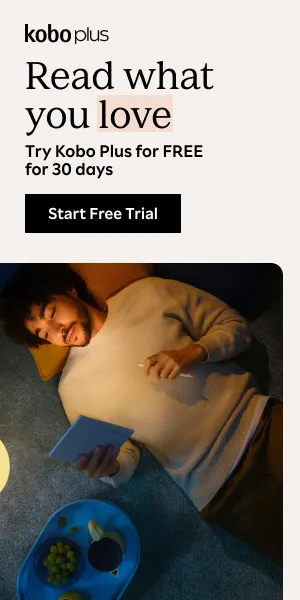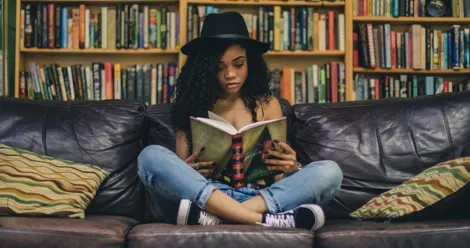
Trends In YA Since The 2016 Election and What They Say About Current Society
This content contains affiliate links. When you buy through these links, we may earn an affiliate commission.
When the results of the 2016 elections were final, and the new president elect named, chills spread through much of the literary and book loving world. For many YA writers, despair meant that writing became a chore, something that at times felt hopeless and challenging in the forthcoming reality of America. What could they say that would mean something in two or three years, deep into this presidency? What stories or themes were worth taking on at this crucial point in American history?
Three years post-election, it’s interesting to see what trends have emerged. Because books tend to take on average around two years to happen—one year for the writer in writing and one year or so for the publishing side/editing side—books that were written post-Trump are making their way onto shelves now. Although not all of these books came as a result of the election, were a response to the election, nor were necessarily written after the election, it’s nonetheless interesting to see what perspectives YA books offer to teen readers growing up under this political moment.

 Aisha Saeed and Becky Albertalli have teamed up for Yes No Maybe So, about a politically engaged teen named Jamie who volunteers for his local state senate candidate who meets Maya, a Muslim girl whose parents are separating and her mother believes political canvassing would be a good activity for her. The book explores local politics and political engagement, as well as broader issues of cross-cultural romance.
It’s interesting that the three big books with these themes feature romance at their core. In an era where people’s differences keep them separate or wary of one another—at least, that’s the government’s message—these books offer a wholly different perspective on the reality of relationships. All three feature a focus on intersections, too, particularly where it comes to engaging with a political system built for and by cishet white able-bodied men. Brandy is a woman of color who writes teens of color; Hutchinson’s story features a queer couple from families of opposing political parties; and Saeed and Albertalli’s story is a cross-cultural romance.
Where fear may drive a wedge among different people with different perspectives in America, these books are among the many showing the story of how working together to understand one another can begin undoing the damage.
Aisha Saeed and Becky Albertalli have teamed up for Yes No Maybe So, about a politically engaged teen named Jamie who volunteers for his local state senate candidate who meets Maya, a Muslim girl whose parents are separating and her mother believes political canvassing would be a good activity for her. The book explores local politics and political engagement, as well as broader issues of cross-cultural romance.
It’s interesting that the three big books with these themes feature romance at their core. In an era where people’s differences keep them separate or wary of one another—at least, that’s the government’s message—these books offer a wholly different perspective on the reality of relationships. All three feature a focus on intersections, too, particularly where it comes to engaging with a political system built for and by cishet white able-bodied men. Brandy is a woman of color who writes teens of color; Hutchinson’s story features a queer couple from families of opposing political parties; and Saeed and Albertalli’s story is a cross-cultural romance.
Where fear may drive a wedge among different people with different perspectives in America, these books are among the many showing the story of how working together to understand one another can begin undoing the damage.
 Kim Liggett’s The Grace Year is one of fall 2019’s most hotly buzzed books. It follows girls who are taught their power is to lure grown men toward them and away from their obligations. So on their 16th birthday, girls are banished as a means of sowing their wild oats in preparation for returning home to marry. But the banishment pits girls against one another in ways, and that—the ways girls are taught to turn against one another as a means of seeking male approval—is the heart of the story.
What’s interesting about Liggett’s book is that it sold to the publisher the day after the 2016 election. The theme and topic and inspiration came before, but its publication in 2019 holds even louder resonance.
Girl-on-girl competition is also one of the threads through Tehlor Kay Meija’s We Set The Dark On Fire, which follows a school of girls who are brought up to either become a Primera wife or a Segundo wife in a society where men of status have one wife for one purpose and a second for another. Upon her graduation, Dani discovers that the second wife she’ll be living with is one of her biggest enemies, a girl who was cruel to her. They’re meant to disdain one another, but Meija twists the trope, bringing them together in ways that neither they, nor their society, could have imagined. “In a battle between two men trying to control her, she’d chosen herself,” writes Meija.
Cult books come and go in the world of YA, but it’s been surprising not to see as many emerging post-election. Given that so many are about taking down an oppressive leadership, it’s not out of the question a new wave of books in that vein will emerge over the coming years. But one that does standout, as well as earned comparison to The Handmaid’s Tale is Shannon Schuren’s The Virtue of Sin. In New Jerusalem, Cade doesn’t like that she’s unable to speak up, but she also knows she’s safe, away from the depravity and sins going on in the bigger world. When she’s paired for marriage with a crush, she’s pretty elated—until the ceremony goes wrong and she ends up with someone else all together. Rather than hold her tongue, she speaks up, breaking the foundation of New Jerusalem.
Kim Liggett’s The Grace Year is one of fall 2019’s most hotly buzzed books. It follows girls who are taught their power is to lure grown men toward them and away from their obligations. So on their 16th birthday, girls are banished as a means of sowing their wild oats in preparation for returning home to marry. But the banishment pits girls against one another in ways, and that—the ways girls are taught to turn against one another as a means of seeking male approval—is the heart of the story.
What’s interesting about Liggett’s book is that it sold to the publisher the day after the 2016 election. The theme and topic and inspiration came before, but its publication in 2019 holds even louder resonance.
Girl-on-girl competition is also one of the threads through Tehlor Kay Meija’s We Set The Dark On Fire, which follows a school of girls who are brought up to either become a Primera wife or a Segundo wife in a society where men of status have one wife for one purpose and a second for another. Upon her graduation, Dani discovers that the second wife she’ll be living with is one of her biggest enemies, a girl who was cruel to her. They’re meant to disdain one another, but Meija twists the trope, bringing them together in ways that neither they, nor their society, could have imagined. “In a battle between two men trying to control her, she’d chosen herself,” writes Meija.
Cult books come and go in the world of YA, but it’s been surprising not to see as many emerging post-election. Given that so many are about taking down an oppressive leadership, it’s not out of the question a new wave of books in that vein will emerge over the coming years. But one that does standout, as well as earned comparison to The Handmaid’s Tale is Shannon Schuren’s The Virtue of Sin. In New Jerusalem, Cade doesn’t like that she’s unable to speak up, but she also knows she’s safe, away from the depravity and sins going on in the bigger world. When she’s paired for marriage with a crush, she’s pretty elated—until the ceremony goes wrong and she ends up with someone else all together. Rather than hold her tongue, she speaks up, breaking the foundation of New Jerusalem.
 An interesting trend running parallel with this one is that of comps to—and stories in the manner of—Thelma and Louise. Charlotte Nicole Davis’s debut The Good Luck Girls is about a team of girls on the run, while Trouble Girls by Julia Lynn Rubin’s anticipated 2021 publication date is pitched as a queer modern take on the classic film. Two other books with that comp out post-election include The Rule of One by Ashley Saunders and Leslie Saunders and Hello Girls by Brittany Cavallaro and Emily Henry.
Where the Handmaid’s Tale trend points to girls breaking from oppressive rule, what the Thelma and Louise comparisons suggest is the female revenge fantasy. Beyond breaking from the rules, these girls are breaking laws and taking down the men who keep them from leaning into their fullest selves and potentials. These revenge fantasies play out over more than those compared to the film in YA, and they’ve certain increased in quantity over the last few years. When the rage and anger can’t be contained anymore, it only makes sense to fantasize about the feeling and power of revenge (and, in the cases of many of the YA books falling into this theme, facing consequences that are deemed worth it).
An interesting trend running parallel with this one is that of comps to—and stories in the manner of—Thelma and Louise. Charlotte Nicole Davis’s debut The Good Luck Girls is about a team of girls on the run, while Trouble Girls by Julia Lynn Rubin’s anticipated 2021 publication date is pitched as a queer modern take on the classic film. Two other books with that comp out post-election include The Rule of One by Ashley Saunders and Leslie Saunders and Hello Girls by Brittany Cavallaro and Emily Henry.
Where the Handmaid’s Tale trend points to girls breaking from oppressive rule, what the Thelma and Louise comparisons suggest is the female revenge fantasy. Beyond breaking from the rules, these girls are breaking laws and taking down the men who keep them from leaning into their fullest selves and potentials. These revenge fantasies play out over more than those compared to the film in YA, and they’ve certain increased in quantity over the last few years. When the rage and anger can’t be contained anymore, it only makes sense to fantasize about the feeling and power of revenge (and, in the cases of many of the YA books falling into this theme, facing consequences that are deemed worth it).
 Bestselling author Karen M. McManus’s Two Can Keep A Secret follows suit, bringing female pain across generations. The book is a murder mystery about a girl who is sent with her brother to live in a small town where her aunt went missing as a teenager and where, just recently, a popular girl who was the school’s homecoming queen was murdered.
How She Died, How I Lived by Mary Crockett is about a girl who never responded to a former classmate’s text asking to hang out, only to discover that he murdered the only girl who did respond. It’s impossible not to see the exploration of toxic masculinity here, and how the storyline parallels similar actions in contemporary America.
Of course, it’s worth noting that because we’re finally seeing more inclusive books hit shelves, it means we’re seeing this theme play out in those books as well. These books serve a readership deserving to see themselves on shelves as well.
When her best-friend-turned-rival is found dead—homicide—Nancy and her friends at an elite Manhattan prep school receive a threat that all of their deepest and darkest secrets will be revealed on social media; this is the premise behind 2021’s How We Fell Apart by Katie Zhao. Nancy decides that she’s going to sniff out the truth about Jamie’s death before they’re all exposed.
Minti Das’s 2020 Brown Girl Ghosted gives the murder/thriller story line a super natural twist and digs into racism and the realities of being a girl of color in the small-town midwest.
Bestselling author Karen M. McManus’s Two Can Keep A Secret follows suit, bringing female pain across generations. The book is a murder mystery about a girl who is sent with her brother to live in a small town where her aunt went missing as a teenager and where, just recently, a popular girl who was the school’s homecoming queen was murdered.
How She Died, How I Lived by Mary Crockett is about a girl who never responded to a former classmate’s text asking to hang out, only to discover that he murdered the only girl who did respond. It’s impossible not to see the exploration of toxic masculinity here, and how the storyline parallels similar actions in contemporary America.
Of course, it’s worth noting that because we’re finally seeing more inclusive books hit shelves, it means we’re seeing this theme play out in those books as well. These books serve a readership deserving to see themselves on shelves as well.
When her best-friend-turned-rival is found dead—homicide—Nancy and her friends at an elite Manhattan prep school receive a threat that all of their deepest and darkest secrets will be revealed on social media; this is the premise behind 2021’s How We Fell Apart by Katie Zhao. Nancy decides that she’s going to sniff out the truth about Jamie’s death before they’re all exposed.
Minti Das’s 2020 Brown Girl Ghosted gives the murder/thriller story line a super natural twist and digs into racism and the realities of being a girl of color in the small-town midwest.
 Lamar Giles’s Spin follows the murder of a popular DJ through the eyes of two girls with whom she’d had a falling out, but for different reasons. Although it’s female pain at the center, it’s also a book about female ambition and collaboration.
With readers voracious for crime stories and thrillers, what does it say when there are so many dead and dying girls or so many girls who are at the center of victimhood?
Lamar Giles’s Spin follows the murder of a popular DJ through the eyes of two girls with whom she’d had a falling out, but for different reasons. Although it’s female pain at the center, it’s also a book about female ambition and collaboration.
With readers voracious for crime stories and thrillers, what does it say when there are so many dead and dying girls or so many girls who are at the center of victimhood?
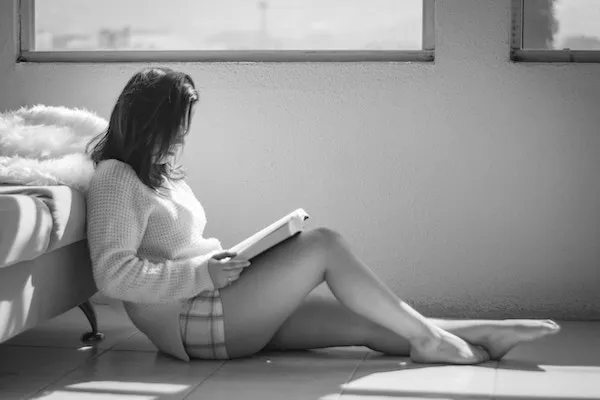
Politically-Engaged Young People
Political- and activist-themed YA is nothing new, and the wave of these books came far before the 2016 election. However, there’s been a certain rise in YA books about voting and being involved in elections that hasn’t been seen before. Brandy Colbert brings the story of two first-time teen voters together in a story set over a single day in her forthcoming The Voting Booth, due in early 2020. The two Black teens find love amidst having to overcome a series of obstacles that stand in their way to casting their ballots in a crucial election. Romance, and specifically a romantic comedy, is the thrust behind Shaun David Hutchinson’s forthcoming YA novel that also takes on politics and teens involved in the election. The State of Us follows the sons of the leading Republican and Democratic presidential candidates who happen to fall for one another. Aisha Saeed and Becky Albertalli have teamed up for Yes No Maybe So, about a politically engaged teen named Jamie who volunteers for his local state senate candidate who meets Maya, a Muslim girl whose parents are separating and her mother believes political canvassing would be a good activity for her. The book explores local politics and political engagement, as well as broader issues of cross-cultural romance.
It’s interesting that the three big books with these themes feature romance at their core. In an era where people’s differences keep them separate or wary of one another—at least, that’s the government’s message—these books offer a wholly different perspective on the reality of relationships. All three feature a focus on intersections, too, particularly where it comes to engaging with a political system built for and by cishet white able-bodied men. Brandy is a woman of color who writes teens of color; Hutchinson’s story features a queer couple from families of opposing political parties; and Saeed and Albertalli’s story is a cross-cultural romance.
Where fear may drive a wedge among different people with different perspectives in America, these books are among the many showing the story of how working together to understand one another can begin undoing the damage.
Aisha Saeed and Becky Albertalli have teamed up for Yes No Maybe So, about a politically engaged teen named Jamie who volunteers for his local state senate candidate who meets Maya, a Muslim girl whose parents are separating and her mother believes political canvassing would be a good activity for her. The book explores local politics and political engagement, as well as broader issues of cross-cultural romance.
It’s interesting that the three big books with these themes feature romance at their core. In an era where people’s differences keep them separate or wary of one another—at least, that’s the government’s message—these books offer a wholly different perspective on the reality of relationships. All three feature a focus on intersections, too, particularly where it comes to engaging with a political system built for and by cishet white able-bodied men. Brandy is a woman of color who writes teens of color; Hutchinson’s story features a queer couple from families of opposing political parties; and Saeed and Albertalli’s story is a cross-cultural romance.
Where fear may drive a wedge among different people with different perspectives in America, these books are among the many showing the story of how working together to understand one another can begin undoing the damage.
Feminist Dystopia a la The Handmaid’s Tale
Earlier this year, it was impossible to look through announcements of upcoming books and not see at least one YA title compared to Margaret Atwood’s The Handmaid’s Tale. No doubt partially inspired by the hit book’s adaptation to streaming, the trend became a marketing darling for YA but still touched upon something deeper: the reality of women’s rights being in jeopardy exists still today, particularly for women of color, and rights are under attack for folks who are nonbinary, trans, or agender. The fear is merited, given the frequent attacks on reproductive health services since the 2016 election. One year into Trump’s administration showcases the horror in access to contraception, abortions, and more. Dystopia as a sub-genre in YA hit fever pitch in the years after The Hunger Games, and while it never disappeared completely, it wasn’t until recently that it saw an uptick, with a specific feminist angle. But more, feminist dystopians aren’t all post-apocalyptic. Many are wrapped up as thrillers or fantasies about the power that girls and women have in taking down men. That fear is the driver behind the need to tamp down their power with oppressive rules and regulations.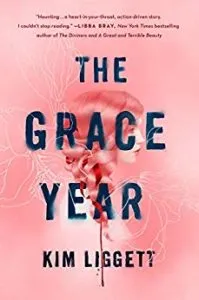 Kim Liggett’s The Grace Year is one of fall 2019’s most hotly buzzed books. It follows girls who are taught their power is to lure grown men toward them and away from their obligations. So on their 16th birthday, girls are banished as a means of sowing their wild oats in preparation for returning home to marry. But the banishment pits girls against one another in ways, and that—the ways girls are taught to turn against one another as a means of seeking male approval—is the heart of the story.
What’s interesting about Liggett’s book is that it sold to the publisher the day after the 2016 election. The theme and topic and inspiration came before, but its publication in 2019 holds even louder resonance.
Girl-on-girl competition is also one of the threads through Tehlor Kay Meija’s We Set The Dark On Fire, which follows a school of girls who are brought up to either become a Primera wife or a Segundo wife in a society where men of status have one wife for one purpose and a second for another. Upon her graduation, Dani discovers that the second wife she’ll be living with is one of her biggest enemies, a girl who was cruel to her. They’re meant to disdain one another, but Meija twists the trope, bringing them together in ways that neither they, nor their society, could have imagined. “In a battle between two men trying to control her, she’d chosen herself,” writes Meija.
Cult books come and go in the world of YA, but it’s been surprising not to see as many emerging post-election. Given that so many are about taking down an oppressive leadership, it’s not out of the question a new wave of books in that vein will emerge over the coming years. But one that does standout, as well as earned comparison to The Handmaid’s Tale is Shannon Schuren’s The Virtue of Sin. In New Jerusalem, Cade doesn’t like that she’s unable to speak up, but she also knows she’s safe, away from the depravity and sins going on in the bigger world. When she’s paired for marriage with a crush, she’s pretty elated—until the ceremony goes wrong and she ends up with someone else all together. Rather than hold her tongue, she speaks up, breaking the foundation of New Jerusalem.
Kim Liggett’s The Grace Year is one of fall 2019’s most hotly buzzed books. It follows girls who are taught their power is to lure grown men toward them and away from their obligations. So on their 16th birthday, girls are banished as a means of sowing their wild oats in preparation for returning home to marry. But the banishment pits girls against one another in ways, and that—the ways girls are taught to turn against one another as a means of seeking male approval—is the heart of the story.
What’s interesting about Liggett’s book is that it sold to the publisher the day after the 2016 election. The theme and topic and inspiration came before, but its publication in 2019 holds even louder resonance.
Girl-on-girl competition is also one of the threads through Tehlor Kay Meija’s We Set The Dark On Fire, which follows a school of girls who are brought up to either become a Primera wife or a Segundo wife in a society where men of status have one wife for one purpose and a second for another. Upon her graduation, Dani discovers that the second wife she’ll be living with is one of her biggest enemies, a girl who was cruel to her. They’re meant to disdain one another, but Meija twists the trope, bringing them together in ways that neither they, nor their society, could have imagined. “In a battle between two men trying to control her, she’d chosen herself,” writes Meija.
Cult books come and go in the world of YA, but it’s been surprising not to see as many emerging post-election. Given that so many are about taking down an oppressive leadership, it’s not out of the question a new wave of books in that vein will emerge over the coming years. But one that does standout, as well as earned comparison to The Handmaid’s Tale is Shannon Schuren’s The Virtue of Sin. In New Jerusalem, Cade doesn’t like that she’s unable to speak up, but she also knows she’s safe, away from the depravity and sins going on in the bigger world. When she’s paired for marriage with a crush, she’s pretty elated—until the ceremony goes wrong and she ends up with someone else all together. Rather than hold her tongue, she speaks up, breaking the foundation of New Jerusalem.
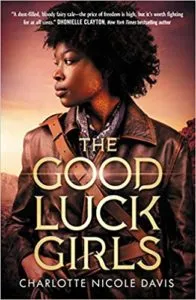 An interesting trend running parallel with this one is that of comps to—and stories in the manner of—Thelma and Louise. Charlotte Nicole Davis’s debut The Good Luck Girls is about a team of girls on the run, while Trouble Girls by Julia Lynn Rubin’s anticipated 2021 publication date is pitched as a queer modern take on the classic film. Two other books with that comp out post-election include The Rule of One by Ashley Saunders and Leslie Saunders and Hello Girls by Brittany Cavallaro and Emily Henry.
Where the Handmaid’s Tale trend points to girls breaking from oppressive rule, what the Thelma and Louise comparisons suggest is the female revenge fantasy. Beyond breaking from the rules, these girls are breaking laws and taking down the men who keep them from leaning into their fullest selves and potentials. These revenge fantasies play out over more than those compared to the film in YA, and they’ve certain increased in quantity over the last few years. When the rage and anger can’t be contained anymore, it only makes sense to fantasize about the feeling and power of revenge (and, in the cases of many of the YA books falling into this theme, facing consequences that are deemed worth it).
An interesting trend running parallel with this one is that of comps to—and stories in the manner of—Thelma and Louise. Charlotte Nicole Davis’s debut The Good Luck Girls is about a team of girls on the run, while Trouble Girls by Julia Lynn Rubin’s anticipated 2021 publication date is pitched as a queer modern take on the classic film. Two other books with that comp out post-election include The Rule of One by Ashley Saunders and Leslie Saunders and Hello Girls by Brittany Cavallaro and Emily Henry.
Where the Handmaid’s Tale trend points to girls breaking from oppressive rule, what the Thelma and Louise comparisons suggest is the female revenge fantasy. Beyond breaking from the rules, these girls are breaking laws and taking down the men who keep them from leaning into their fullest selves and potentials. These revenge fantasies play out over more than those compared to the film in YA, and they’ve certain increased in quantity over the last few years. When the rage and anger can’t be contained anymore, it only makes sense to fantasize about the feeling and power of revenge (and, in the cases of many of the YA books falling into this theme, facing consequences that are deemed worth it).
The Thrills and Chills of Female Pain and Trauma
When Gone Girl published back in 2012, literary agents and editors predicted a rise in similar books for YA over the coming years. Those books featured unreliable and unlikeable female main characters at their center. The trend and thirst for thrillers hasn’t abated since, but the content of many of them has shifted a bit. Though thrillers have frequently held women’s pain and suffering at their center—sometimes subverting it all together to allow power for other female characters in the story—these have emerged as major catalysts in YA thrillers post-election. It’s worth noting here, too, that popular podcasts like My Favorite Murder exploded post-election as well. For many, it’s as much a fascination and running towards fear as it is a way to escape the real world and its current horrors. True crime love has become a personality trait for many in the online (and offline) world, and that has been paying off well for thrillers. Most of the books taking on female pain and trauma as the thrust within their stories are written by female authors, but it’s still hard not to look at the piles of dead and hurting girls and not wonder what the bigger message is. We’re fascinated with the gruesome, as long as we’re on the outside, much as we also cannot get enough true crime and enough details about the latest horrors against women in America. The rage and anger spill onto the pages in ways that feel far more contained. Many of these pain and suffering narratives come with their own splash of revenge and revenge fantasy, too. Coming in 2020 is Katherine Laurin’s These Vengeful Hearts, which follows a girl infiltrating her high school’s female secret society to get revenge for irreversible damage done to her sister by the group. Kit Frick’s forthcoming I Killed Zoe Spanos will also hit shelves in 2020. It follows a girl who takes a summer nannying job, only to be a suspect in the murder of a local girl. Like Courtney Summers’s Sadie, it’s partially told as a podcast. Bestselling author Karen M. McManus’s Two Can Keep A Secret follows suit, bringing female pain across generations. The book is a murder mystery about a girl who is sent with her brother to live in a small town where her aunt went missing as a teenager and where, just recently, a popular girl who was the school’s homecoming queen was murdered.
How She Died, How I Lived by Mary Crockett is about a girl who never responded to a former classmate’s text asking to hang out, only to discover that he murdered the only girl who did respond. It’s impossible not to see the exploration of toxic masculinity here, and how the storyline parallels similar actions in contemporary America.
Of course, it’s worth noting that because we’re finally seeing more inclusive books hit shelves, it means we’re seeing this theme play out in those books as well. These books serve a readership deserving to see themselves on shelves as well.
When her best-friend-turned-rival is found dead—homicide—Nancy and her friends at an elite Manhattan prep school receive a threat that all of their deepest and darkest secrets will be revealed on social media; this is the premise behind 2021’s How We Fell Apart by Katie Zhao. Nancy decides that she’s going to sniff out the truth about Jamie’s death before they’re all exposed.
Minti Das’s 2020 Brown Girl Ghosted gives the murder/thriller story line a super natural twist and digs into racism and the realities of being a girl of color in the small-town midwest.
Bestselling author Karen M. McManus’s Two Can Keep A Secret follows suit, bringing female pain across generations. The book is a murder mystery about a girl who is sent with her brother to live in a small town where her aunt went missing as a teenager and where, just recently, a popular girl who was the school’s homecoming queen was murdered.
How She Died, How I Lived by Mary Crockett is about a girl who never responded to a former classmate’s text asking to hang out, only to discover that he murdered the only girl who did respond. It’s impossible not to see the exploration of toxic masculinity here, and how the storyline parallels similar actions in contemporary America.
Of course, it’s worth noting that because we’re finally seeing more inclusive books hit shelves, it means we’re seeing this theme play out in those books as well. These books serve a readership deserving to see themselves on shelves as well.
When her best-friend-turned-rival is found dead—homicide—Nancy and her friends at an elite Manhattan prep school receive a threat that all of their deepest and darkest secrets will be revealed on social media; this is the premise behind 2021’s How We Fell Apart by Katie Zhao. Nancy decides that she’s going to sniff out the truth about Jamie’s death before they’re all exposed.
Minti Das’s 2020 Brown Girl Ghosted gives the murder/thriller story line a super natural twist and digs into racism and the realities of being a girl of color in the small-town midwest.
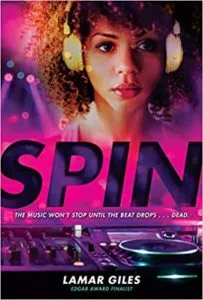 Lamar Giles’s Spin follows the murder of a popular DJ through the eyes of two girls with whom she’d had a falling out, but for different reasons. Although it’s female pain at the center, it’s also a book about female ambition and collaboration.
With readers voracious for crime stories and thrillers, what does it say when there are so many dead and dying girls or so many girls who are at the center of victimhood?
Lamar Giles’s Spin follows the murder of a popular DJ through the eyes of two girls with whom she’d had a falling out, but for different reasons. Although it’s female pain at the center, it’s also a book about female ambition and collaboration.
With readers voracious for crime stories and thrillers, what does it say when there are so many dead and dying girls or so many girls who are at the center of victimhood?

